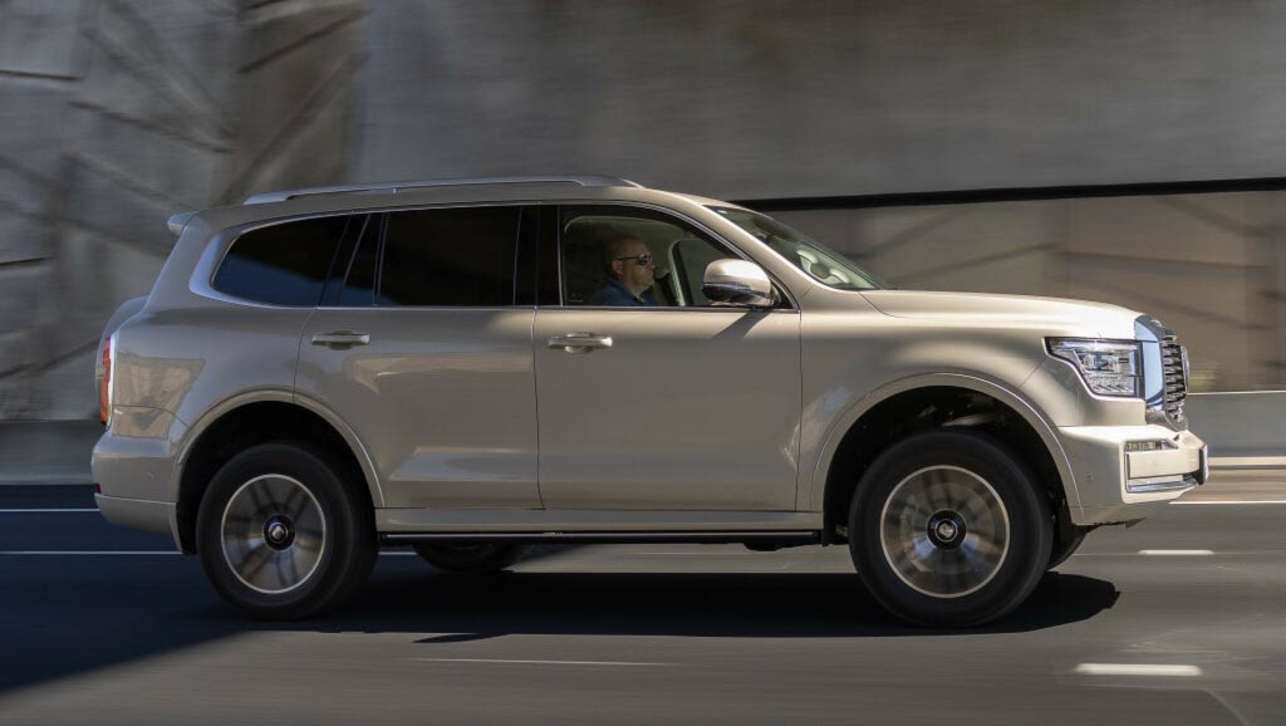How difficult is it for GWM to launch the most expensive vehicle the company has ever offered in Australia and convince consumers to part with up to $75,000 in the process?
With the newly-released Tank 500 HEV (hybrid) going up against the Toyota Prado and LandCruiser as well as the Nissan Patrol with their rusted-on reputations for reliability and durability, how tricky is it for a relatively unknown and untested brand to break through with extremely brand-loyal 4WD-wagon buyers?
Is the Chinese brand overly-optimistic or utterly delusional? Or is it yet again a case of history repeating?
According to GWM Australia Head of Marketing and Communications, Steve Maciver, Australians are open-minded consumers who can spot value-for-money, even with an as-yet unproven new model vehicle.
“Product, product, product, it is all about product first with GWM and it’s as simple as that,” he replied.
“I'm talking about value. Whether you're buying $25,990 Jolion (by GWM’s SUV-brand Haval), or whether you're buying a $67,000 Tank 500, value has to make sense to consumers. So, our strategy around that doesn't change.”

Maciver said the unsurprising success of its value-focused small SUVs and utes against long-established, but more-expensive alternatives, proves value is relative and not just constrained by pricing and class.
“Absolutely, we are now moving into higher brace price brackets and speaking to different customers than we have done before,” he said. “But (then) again, we've gone through this exercise (already) with the introduction of the of the current generation of Jolion, current generation of (Cannon one-tonne) Ute, current generation of (Haval) H6.

“And going back four years ago, the average selling price of GWM was around $23,000 and it’s now snuck up to $40,00. That shows us that the products are right, it stacks up in terms of fit and finish, the way it presents, the value equation… all of that.
“Customers will still come to it, so it comes back to that. Yes, we are moving to higher price brackets, but if the value is there, the product stacks up as a proposition, yes, we're confident we can bring it to market and we can make a success of it.”

Historians and readers with long memories might recall that Toyota and Nissan faced a similar dilemma when they were unknown brands in the 1950s and '60s.
Back then, with the earliest LandCruisers and Patrols that were cheaper than the established Land Rover alternative, both fledgling Japanese carmakers dove straight into an Australian car market that was still extremely prejudiced against products from that country in the aftermath of World War II.

Both proved unexpectedly tough and reliable in the backdrop of nation-building projects like the Snowy River Scheme, making a lasting name for themselves that continue to resonate with generations of work as well as adventure off-road 4WD buyers.
Which is exactly where GWM wants to be.
The Tank 500 HEV Lux starts from $66,490 drive-away, while the HEV Ultra kicks off from $73,990 drive-away.

This makes the range cheaper than all but the base grade of the smaller, outgoing Toyota Prado GX diesel (from $62,830 before on-road costs), while undercutting the slightly-larger entry-level Toyota LandCruiser 300 diesel by at least $35,000.
Similarly, the full-sized Nissan Patrol Ti V8 begins from around $22,000 more than HEV Lux opener.

Additionally, the cheapest Tank 500 is no stripper special either, splitting the two Toyota 4WD wagons in size yet still offering a unique hybrid powertrain, three-row seating, auto-levelling LED headlights, a 360-degree view camera, wireless Apple CarPlay/Android Auto, auto parking with reverse assist, front and rear parking sensors, a sunroof, side steps, powered and heated front seats, electric rear diff lock and a long list of driver-assist safety items like AEB and adaptive cruise control.
It seems likely that GWM is playing a proven long-game strategy here, then, with both the more-compact Tank 300 and larger 500 HEV being the 21st century newcomers facing uncertain and even sceptical consumers.
Will they succeed? We wouldn't bet against them.



.jpg)



.jpg)



.jpg)



.jpg)



.jpg)
Comments